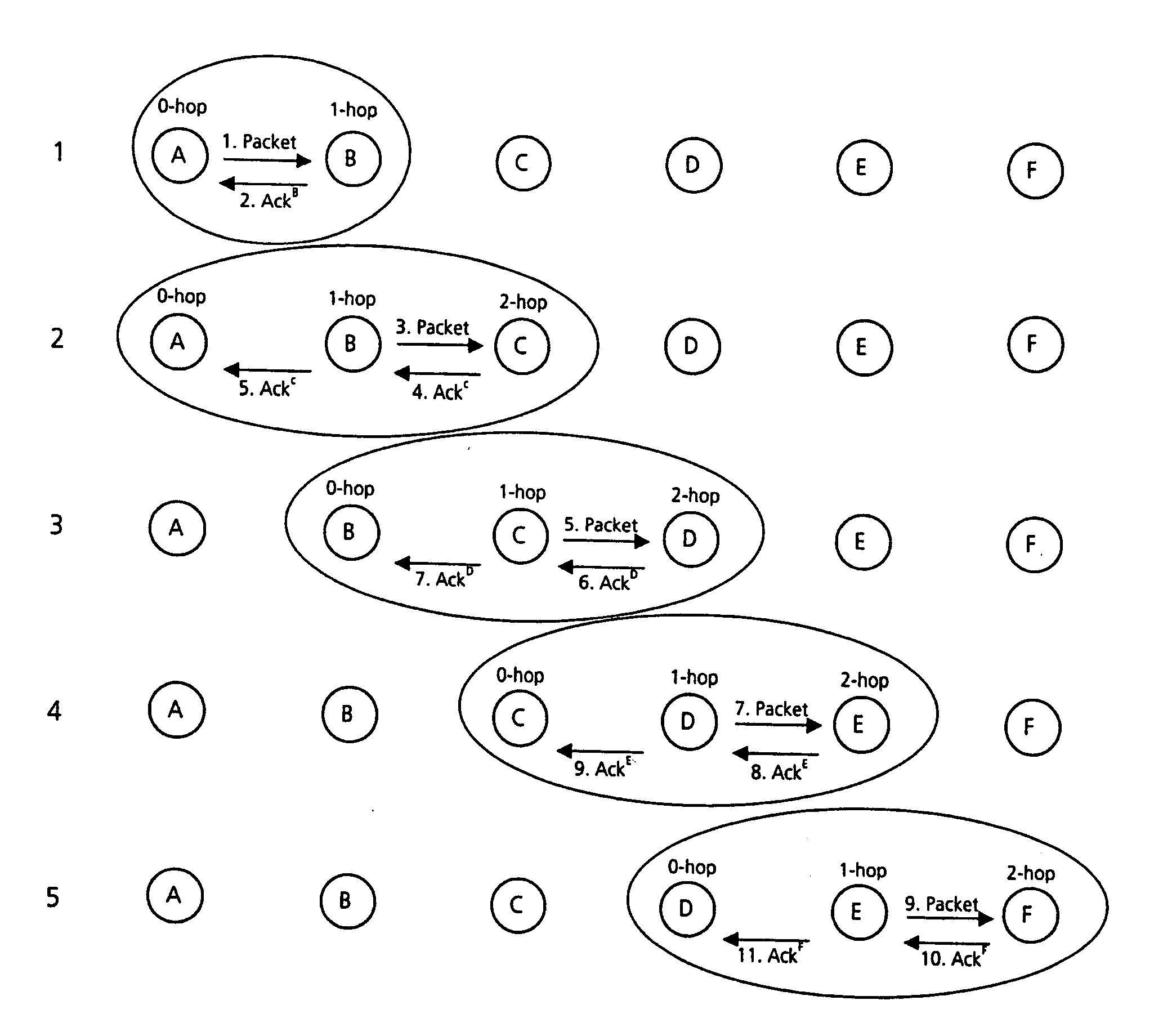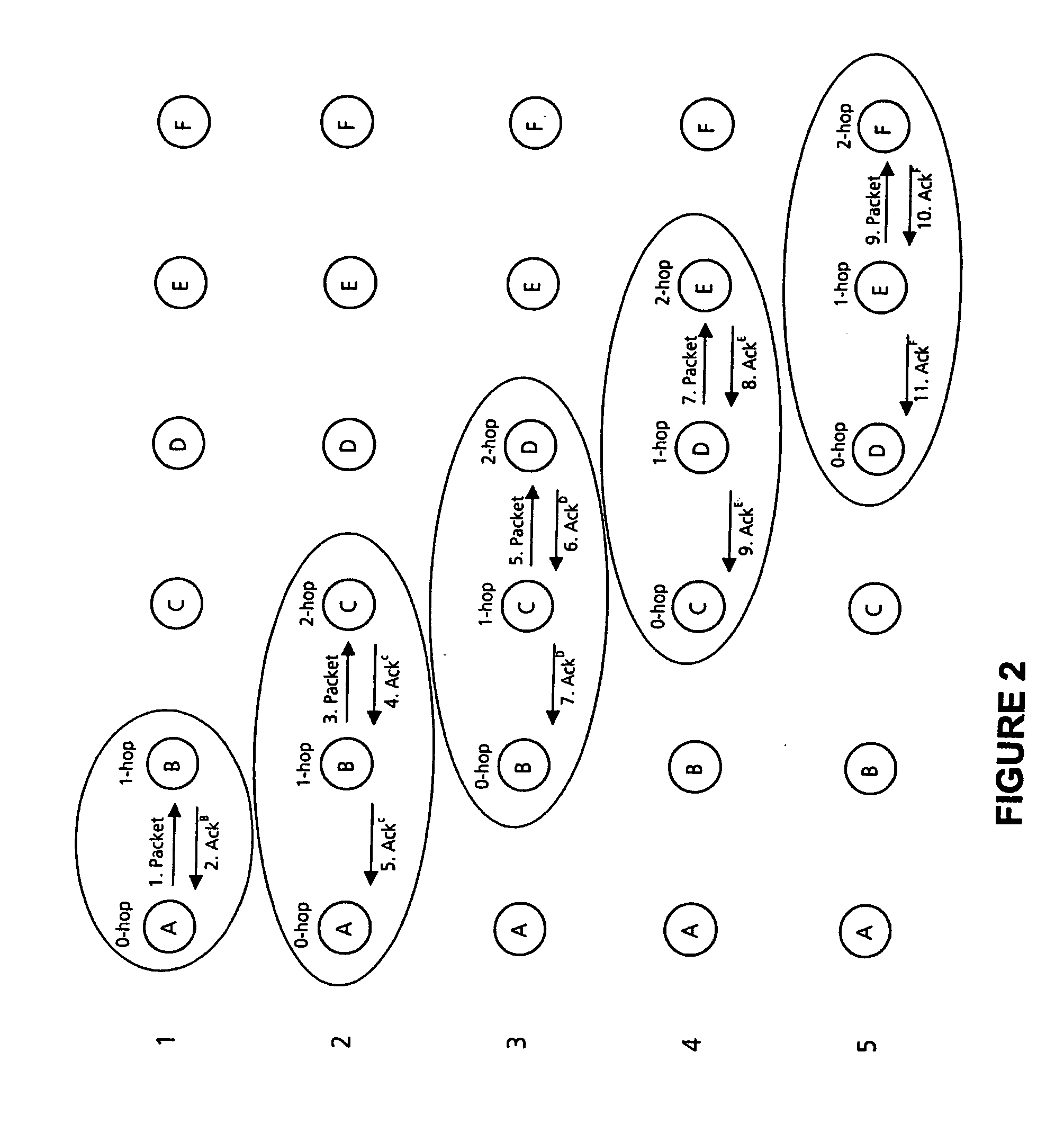Routing protocol for ad hoc networks
a routing protocol and network technology, applied in the direction of data switching network, data switching details, data commuication services, etc., can solve the problems of inability to transmit, central entity providing network administration services, and inability to provide ad hoc network transmitting,
- Summary
- Abstract
- Description
- Claims
- Application Information
AI Technical Summary
Benefits of technology
Problems solved by technology
Method used
Image
Examples
Embodiment Construction
Embodiments of the invention will now be described by way of example only, with reference to the accompanying drawings, of which:
FIG. 1 is a schematic illustration of a passive acknowledgement system;
FIG. 2 is a schematic illustration of the stages of a two-hop acknowledgement system; and
FIG. 3 is a schematic illustration of a two-hop acknowledgement system.
A system will now be described in relation to a 2-hop acknowledged routing protocol. However, it should be appreciated that the invention is not limited to the use of acknowledgement signals from nodes that are two hops away, and the invention can be applied to the use of acknowledgement signals that are further than two hops away.
The system is based on the Zone Routing Protocol (ZRP). If the flood is restricted to just the local neighbourhood, then much of the benefit of proactive routing is kept, without the inefficiencies of a network-wide flood.
This presents a hybrid ad hoc routing protocol which uses a 2-hop acknowl...
PUM
 Login to View More
Login to View More Abstract
Description
Claims
Application Information
 Login to View More
Login to View More - R&D
- Intellectual Property
- Life Sciences
- Materials
- Tech Scout
- Unparalleled Data Quality
- Higher Quality Content
- 60% Fewer Hallucinations
Browse by: Latest US Patents, China's latest patents, Technical Efficacy Thesaurus, Application Domain, Technology Topic, Popular Technical Reports.
© 2025 PatSnap. All rights reserved.Legal|Privacy policy|Modern Slavery Act Transparency Statement|Sitemap|About US| Contact US: help@patsnap.com



